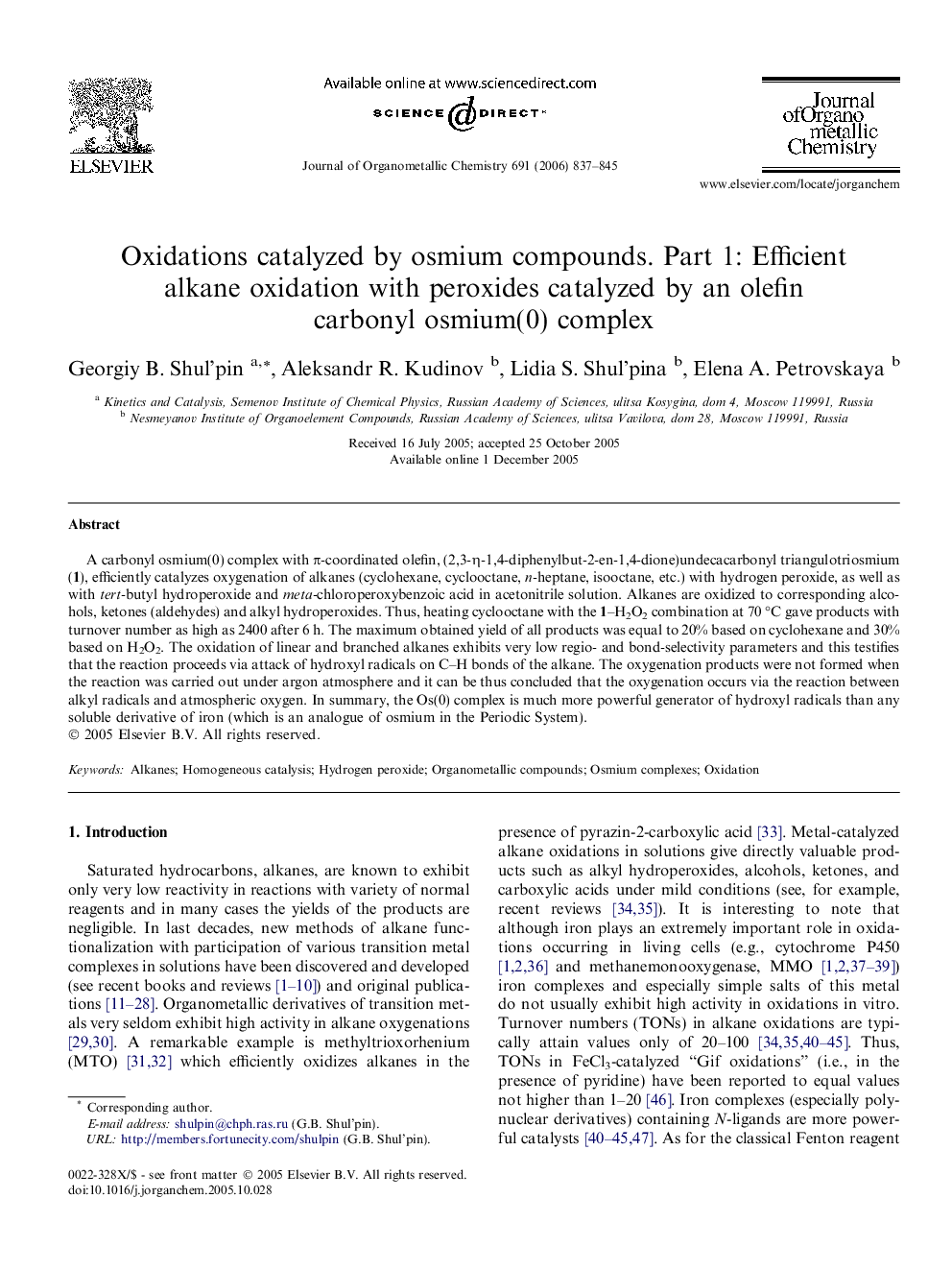| Article ID | Journal | Published Year | Pages | File Type |
|---|---|---|---|---|
| 1327640 | Journal of Organometallic Chemistry | 2006 | 9 Pages |
A carbonyl osmium(0) complex with π-coordinated olefin, (2,3-η-1,4-diphenylbut-2-en-1,4-dione)undecacarbonyl triangulotriosmium (1), efficiently catalyzes oxygenation of alkanes (cyclohexane, cyclooctane, n-heptane, isooctane, etc.) with hydrogen peroxide, as well as with tert-butyl hydroperoxide and meta-chloroperoxybenzoic acid in acetonitrile solution. Alkanes are oxidized to corresponding alcohols, ketones (aldehydes) and alkyl hydroperoxides. Thus, heating cyclooctane with the 1–H2O2 combination at 70 °C gave products with turnover number as high as 2400 after 6 h. The maximum obtained yield of all products was equal to 20% based on cyclohexane and 30% based on H2O2. The oxidation of linear and branched alkanes exhibits very low regio- and bond-selectivity parameters and this testifies that the reaction proceeds via attack of hydroxyl radicals on C–H bonds of the alkane. The oxygenation products were not formed when the reaction was carried out under argon atmosphere and it can be thus concluded that the oxygenation occurs via the reaction between alkyl radicals and atmospheric oxygen. In summary, the Os(0) complex is much more powerful generator of hydroxyl radicals than any soluble derivative of iron (which is an analogue of osmium in the Periodic System).
Graphical abstractA carbonyl osmium(0) complex with π-coordinated olefin, (2,3-η-1,4-diphenylbut-2-en-1,4-dione)undecacarbonyl triangulotriosmium, efficiently catalyzes oxygenation of alkanes (cyclohexane, cyclooctane, n-heptane, isooctane, etc.) with hydrogen peroxide, as well as with tert-butyl hydroperoxide and meta-chloroperoxybenzoic acid in acetonitrile solution. Alkanes are oxidized to corresponding alcohols, ketones (aldehydes) and alkyl hydroperoxides.Figure optionsDownload full-size imageDownload as PowerPoint slide
